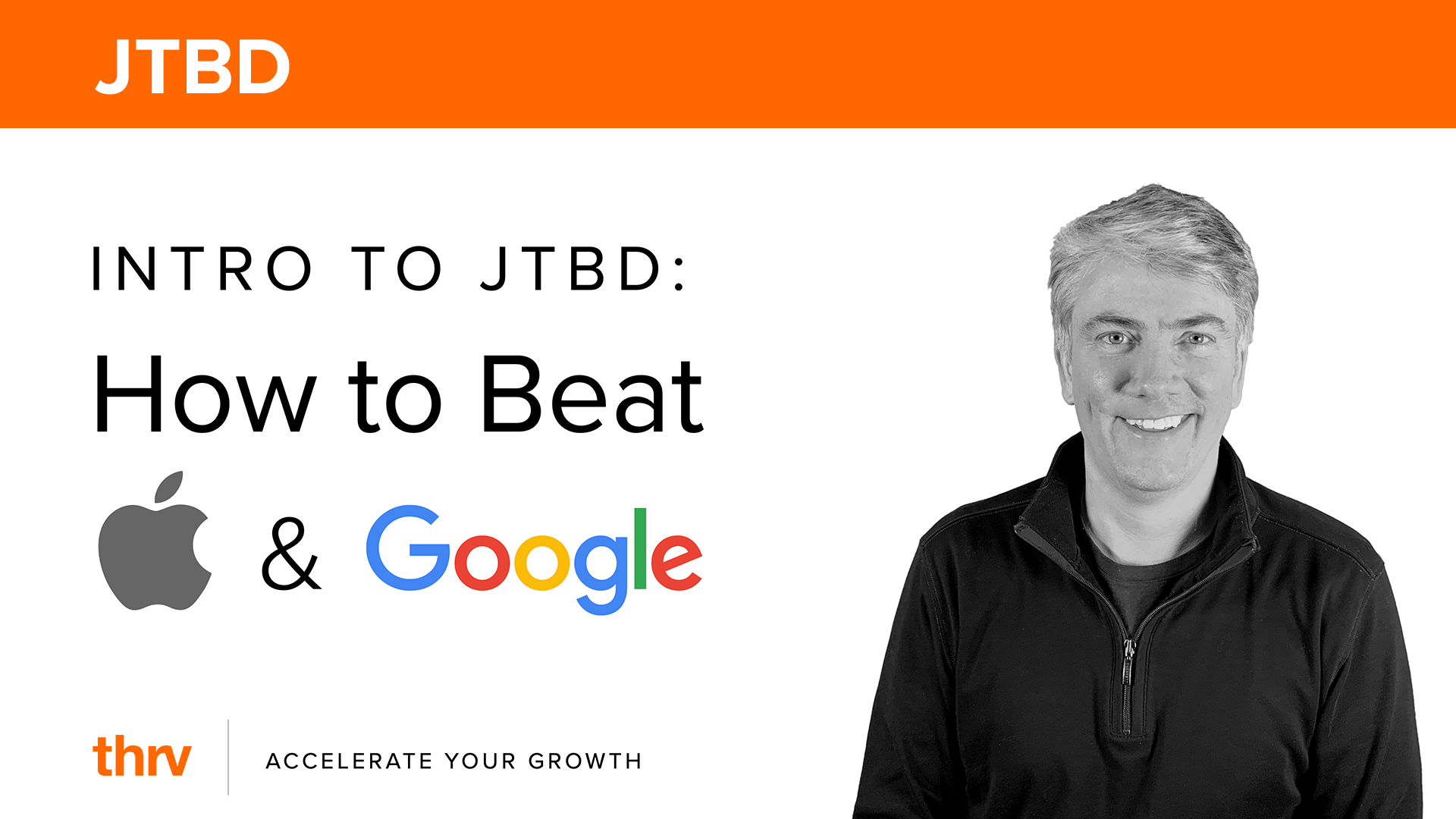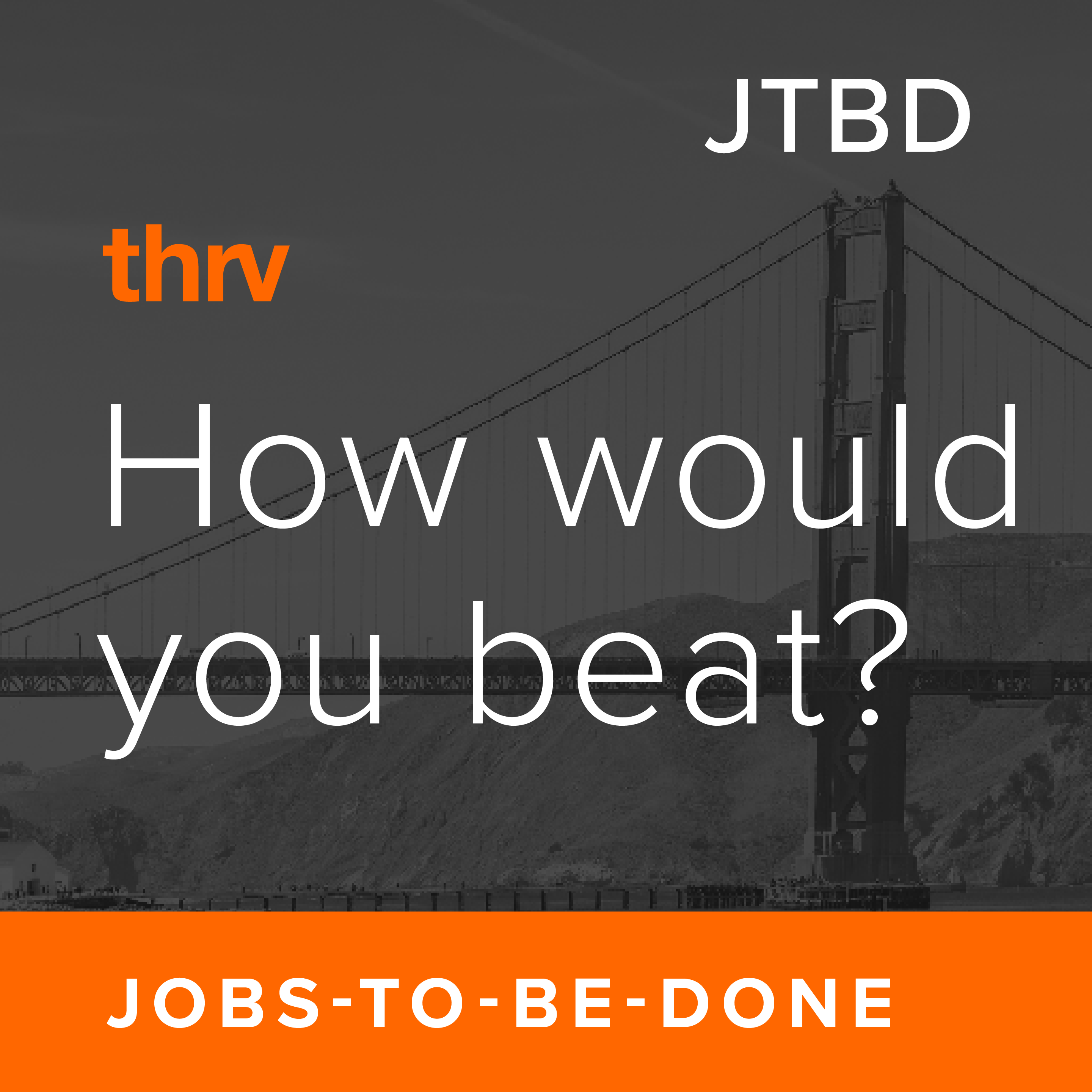January 29, 2019
The Wrong Product Development Strategy Will Kill You

Issue: Poorly Defined Product Development Strategy
Your product strategy is everything. It will define your success or failure as a product team. So what is a product strategy? Does your product team even agree on the definition of a product strategy? Can you walk around your company, ask your colleagues, “What is our product strategy?” and get the same answer? If not, this is a serious problem.
A product strategy is very simple. It has three elements:
- The customer you are targeting
- The job (JTBD) you are going to help them get done
- The product platform you are going to use to get their job done.
Let’s look at some examples. United Airlines has a product strategy (whether it knows it or not) to target sales professionals (the customers) who are acquiring customers (the JTBD) using airplanes and airports (the platform). Zoom has a product strategy to target sales professionals (the customers) who are acquiring customers (the JTBD) using web video conferencing (the platform).
You can see why JTBD product strategies are useful. First, it clarifies who your competition is. United probably didn’t think of Zoom as a competitor, but they are because they are competing for some of United’s most valuable customers. Covid just makes this excruciatingly clear. Second, if United’s product team could clearly articulate this as a strategy it would have lead to product innovations that would help sales people get the job done. It could have even lead to development of web conferencing and CRM tools that helped salespeople. This might seem outside an airlines “core competency” but that is the whole point.
Your customers do not care about your core competencies, they care about getting their job done. United is in serious trouble, and not just because of Covid. It’s because Zoom (and other online tools) are helping salespeople acquire customers without getting on a plane.
Traditional Way: Company Focused, Not Customer Focused
Why is it so hard for companies to clearly define their product strategy? Some of the blame is with Harvard Business School.
In 1996, Harvard Business School Professor Michael Porter wrote a famous paper called “What is Strategy?” Companies often use Michael Porter's definition of strategy, since he was a pioneering academic in the field, famous for analyzing industries to determine competitive strategy. In Porter's view, “The essence of strategy is choosing to perform activities differently than rivals do.” Activities companies perform include manufacturing, engineering, distribution, marketing, and selling. For example, mobile phone companies each perform these activities but they have had very different results.
In many financial reporting periods, Apple has had 98% of the profits in the industry, but that isn't because Apple performs activities differently, as Michael Porter would predict. In fact, Apple relies on Samsung to perform some of their manufacturing activities. Apple has leading profit share because they satisfy customer needs differently than their competitors. Successful strategy satisfies needs differently than your competitors. Customer needs, not activities, should be the focus of your product development.
This is why Michael Porter’s strategy definition is outdated. In 1996, Michael Porter didn't have the customer's jobs-to-be-done (JTBD) in his strategy toolkit. Performing activities differently than your competitors is important, but anyone can copy activities using industry best practices. Satisfying your customers JTBD in a unique way is much harder to copy.
Needs in your customer's job-to-be-done, not your activities, should be the foundation of your strategy because your customer's JTBD tells you what activities to perform so you can satisfy your customer better than your competitors.
JTBD Way: Choose a Customer and Focus on Their Unmet Needs
A product development strategy requires you to make 3 simple choices:
- Identify which job beneficiary to target.
- Select which job-to-be-done to fulfill.
- Determine which platform you are going to use to satisfy customer needs differently than your competitors.
Let's look at a well-known example to demonstrate why a JTBD-based product development strategy definition is more useful. We all have executed the job of “creating a mood with music.” While the products have changed dramatically over time, the job is stable and has not changed. The needs in the job have not changed either.
One need in creating a mood with music is to find a new song for the mood. This need follows the job-to-be-done structure with an action and a variable. We can measure the speed and accuracy of different platforms satisfying this need. Let's look at how satisfying this need has changed over time with the arrival of new platforms that led to different product strategies.
In 1984, when the CD was released, finding a new song for the mood was time-consuming and often very inaccurate because you often couldn't find a new song. The speed was slow and the accuracy was low because consumers were forced to buy entire albums.
Then, CD players and changers emerged to help with this need by enabling consumers to search their library for songs. However, finding a new song for a mood was still time-consuming and not always accurate. The iPod, of course, was a huge improvement because it reduced the steps and time significantly. Accuracy was improved with the introduction of the iTunes store, (you still might have difficulty quickly finding a song for the mood, but now it’s because there are so many songs to choose from).
Microsoft, on the other hand, was clearly not using customer needs in the job to create their product. In 2007, Microsoft’s Zune tried to copy what Apple was providing without making the experience faster or more accurate.
Pandora launched with a different product strategy using a new platform: streaming. Pandora's streaming and music taste algorithms satisfied this customer need faster and more accurately. When Pandora launched, it was signing up 90,000 new users per day because it satisfied unmet needs in the job faster and more accurately than its competitors.
These are great examples of how a product development strategy can lead to either success or failure. A company with enormous resources (Microsoft) chose the wrong product strategy (i.e. using a hard drive to satisfy needs in the same way as the iPod) and it led to failure. In contrast, Pandora chose a differentiated strategy to satisfy needs faster and more accurately and it took Apple an entire decade to launch a competing streaming service.
Benefit: Align Your Team around a Central Strategy
To recap, you create a product strategy by identifying a job beneficiary and job to target, and then choose a platform that will satisfy unmet customer needs faster and more accurately than your competitors. Once you’ve done those 3 things, you can begin the process of segmenting your customers based on their needs and act accordingly.
Using jobs-to-be-done as the foundation for your product strategy means you will have a strategy that is unambiguous and easy to remember. Everybody on your team is aligned and it gives you direction on what to do in your particular department to fulfill that strategy. It mitigates risk because you know whether or not you're building the right platform.
To learn more about jobs-to-be-done as a product development strategy, contact us today. Or take our free online JTBD Course.
Posted by Jay Haynes View all Posts by Jay Haynes





